Facebook is always evolving. Last year, it was for advertisers to rejoice with the increased clarity in ad creation, the introduction of power editor among others. This year, the changes seem skewed towards making Facebook a better experience for non-business users. If this means, making Facebook a little less business-friendly, there is little hesitation.
It’s no secret where all of this has lead; all the social media bulletin boards are buzzing with the news of plummeting organic reach for pages.
Why is this happening?
It was inevitable; Facebook has grown and it has grown well. How many times we as marketers have rejoiced in the fact that the user growth on Facebook is incredible (1.23 billion monthly active users)? With the number of brands on Facebook right now (more than 50 million), it is unfair of us just to assume that the organic reach of pages would not decrease.
An average user is exposed to 1500 potential pieces of content every time they log in. With this deluge of content, people‘s time to browse through their news feed is still the same, so something needed to be done to cut this clutter. That is what Facebook is trying to do right now. (data source – Digital marketing Ramblings)
It determines what posts are relevant by the amount of engagement (clicks, likes, comments, shares) a post receives, and gives priority to such posts. Negative feedback (spam reports) also plays a major role. Not just this, Facebook is also taking feedback from people about the kinds of posts that they want to see.
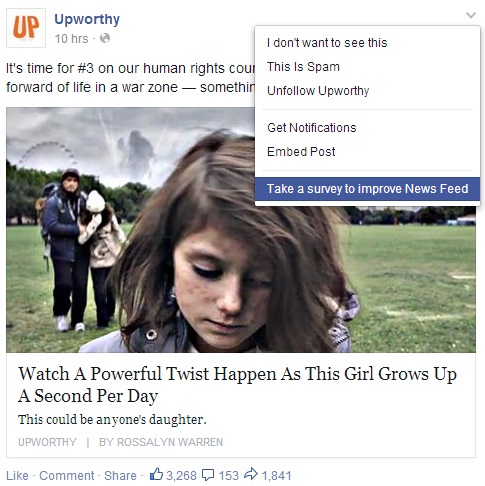
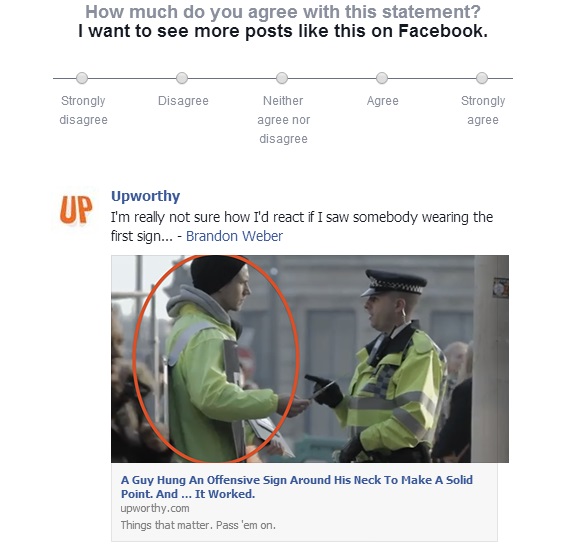
And, it’s already working. I am seeing more posts from the news websites I generally interact with.
So, let’s start with the problem. The organic reach has dropped. The following graph by EdgeRankChecker will show you by how much:
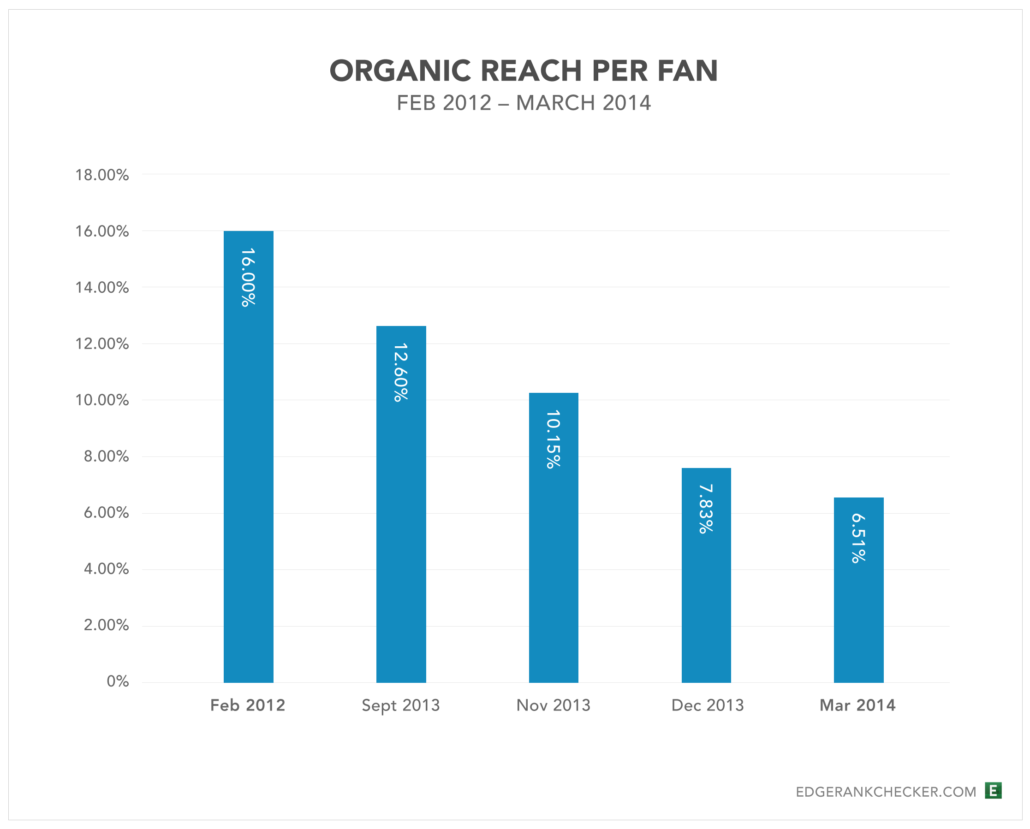
These numbers have caused a lot of grief to small business marketers, because with limited marketing budgets, they cannot afford to shell out potloads of money to be visible.
So, the real question is, what can you, as a marketer do to make sure that this organic reach drop doesn’t hit you as much.
But, first things first!
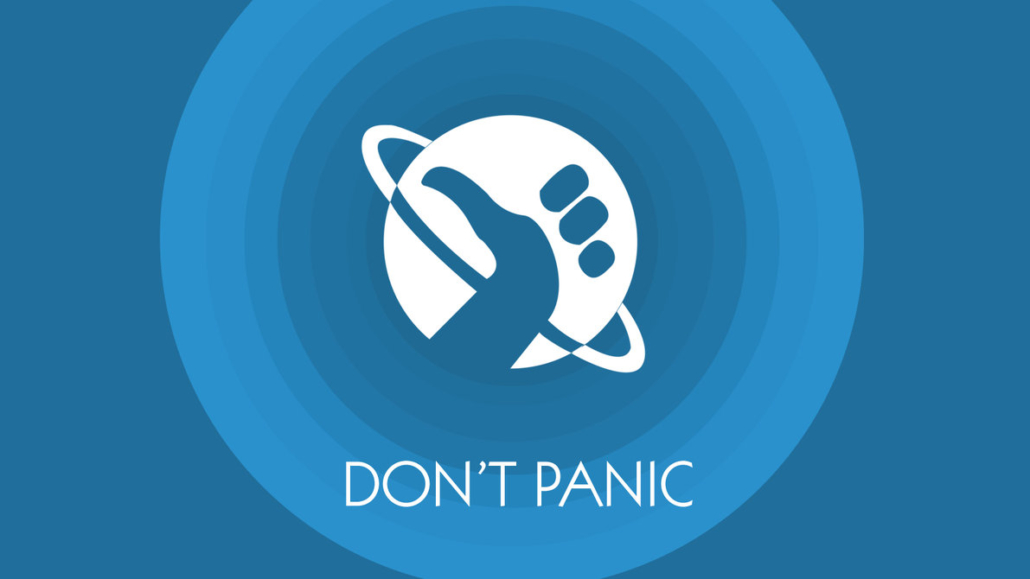
Good!
Now, how to counter organic reach drop?
We saw the drop in February as well; so, we are trying a few things to bring the reach back up. We just started, so the engagement is not back up yet, but we have seen improved reach. Here is what we are trying to do; you can try them too and share your findings with us.
1. Invest in ads, if you aren’t already
Facebook ads can be extremely effective at a fraction of a cost of Google ads and other paid channels. We have experienced this ourselves while running ads for LeadSquared. So, if you have budget to invest in ads, allocate some to Facebook as well. In fact, brands have already started doing that. Instead of running for cover, they are increasing their spend on Facebook.
To effectively make use of ads, there are a few things you can do:
Make use of custom and lookalike audience: If you have been running Facebook ads, you would know what custom and lookalike audiences are. You can make use of email IDs of your existing customers and prospects (custom audience), and find more audience with similar demographic profiles, interests etc. (lookalike audience).
Now, this would help because it would make your ads very targeted, and more paid interaction might also pave the way for more organic interaction from your followers/target audience.
2. Post at the right time
Now, we know that the organic reach is decreasing, so you have to try and show your posts to as many people as possible when you can. The best way to do this is to post when majority of your followers are online. Now, luckily Facebook’s insights allow you to know exactly on what day of the week, what’s the best time to post. Check when your fans are online using Facebook insights, and post at the peak times. You would be surprised to know that the best times to post maybe after you close shop. At least that was the case for us; we found that even though noon to midnight is the time when most of our audience is online, 11 PM is when our users are the most active.
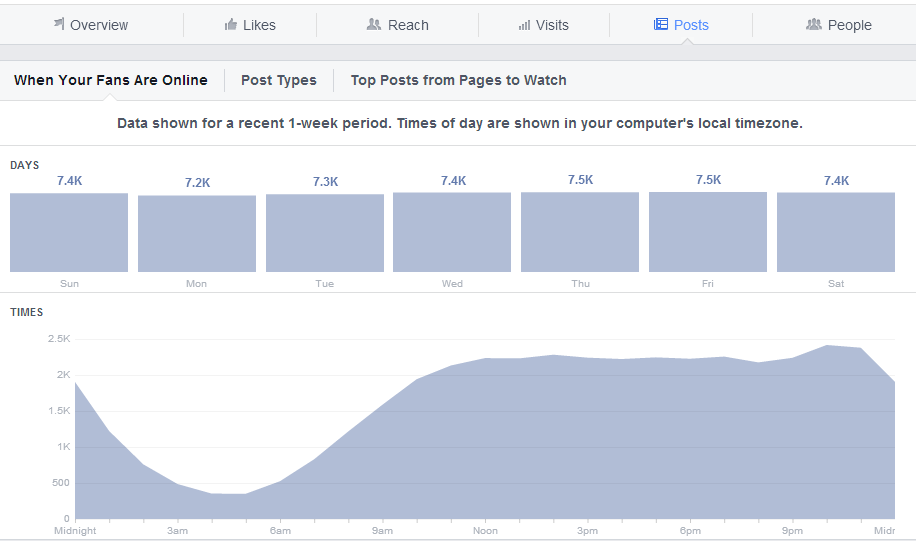
If you want, you can use a service like Buffer to schedule posts. You can manage one schedule for your page free.
3. Drive traffic/engagement from other channels to your Facebook page (whichever channels are more popular for you).
a) If your blogs are more popular, you can use embedded posts to bring people from blog to FB. This is how an embedded post looks like.
//
(function(d, s, id) { var js, fjs = d.getElementsByTagName(s)[0]; if (d.getElementById(id)) return; js = d.createElement(s); js.id = id; js.src = “//connect.facebook.net/en_US/all.js#xfbml=1”; fjs.parentNode.insertBefore(js, fjs); }(document, ‘script’, ‘facebook-jssdk’));
//
b) If you have a good no. of email subscribers, you can even create fun surveys and ask people to respond on your brand page, instead of through email.
c) Use Facebook Remarketing to target one of your non-sales post, and target it to all of your Blog Visitors (by creating Custom Audience using Facebook’s new remarketing tag). These are the people who already know you from your blog, so they might engage with your posts on Facebook as well; this would have a positive impact on your paid reach, increase engagement, and in turn impact your organic reach as well.
4. Use Groups
If you use Facebook to update your community ‘or’ users about your product etc., create Groups to reach people who really care about you; this might give more visibility amongst people who actually care to see that information.
5. Stop chasing likes
If you still are, you will be the one to lose: Since the beginning of time, it has been suggested by all the Facebook marketing experts to go not after the quantity but the quality of likes. Facebook’s newest change justifies this, as the organic reach has gone down, and content is visible to lesser and lesser number of fans every day. Reason – this is not the content that they want to see. So, in the long run, only the people who genuinely interact with your content will be able to see it.
6. Look at other social networks
Google Plus is turning out to be a good community. Find out where else your target audience hangs out, and follow them there.
7. Find out what kinds of posts work the best for you and then share more of them
Photos and videos have been found to work better than links or status updates, but the pattern might vary for your page. You can check what’s working the best for you in your insights page again.
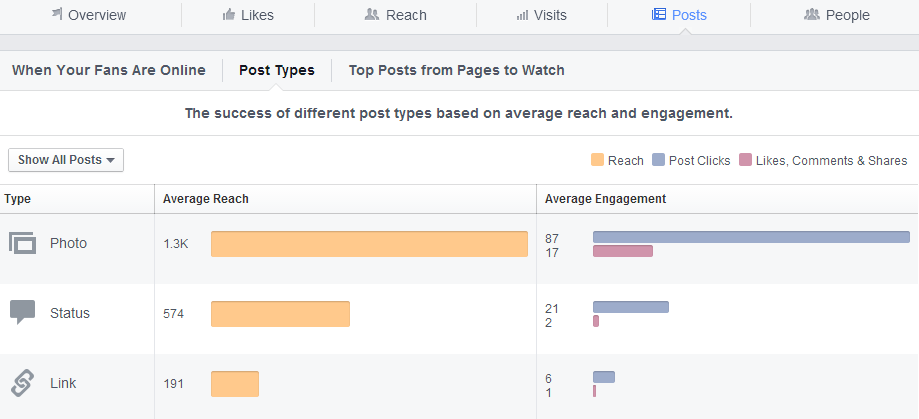
As you can see, for us as well photo posts have worked better than both status and link posts. Check yours and share accordingly.
8. Post Frequently
Seems obvious enough, but it took us some time to realize that we were not posting enough on Facebook; well we still aren’t, but we definitely have increased the frequency, and seen the increase in organic reach as a result. Ideally, you should post 4-5 times per day, and use the golden 3:1:1 rule (3 interesting posts relevant to your audience : 1 soft promotion : 1 hard promotion)
So, there, these are a few things we have been trying to improve our organic reach. We have seen a few results, and we would continue to share the progress with you. In the meantime, what are you doing to counter the organic reach drop?









![[Webinar] Sales Automation 101: Unclog your Sales Pipeline](https://www.leadsquared.com/wp-content/uploads/2024/04/automation-webianr-popup.gif)